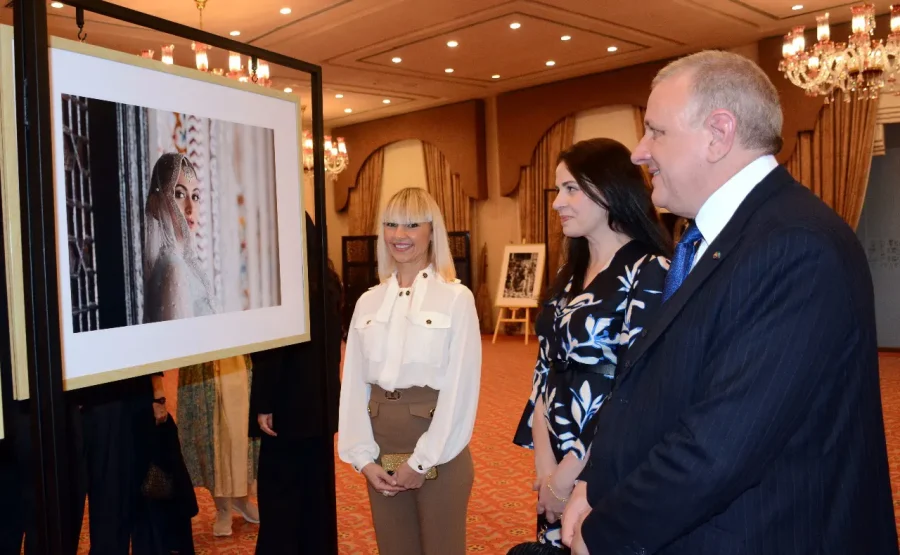ZUBAIR QURESHI
Marzia Reggiani, a unique, ‘emotional’ photographer who is said to ‘transform a camera click into a work of art’ captivated a large number of art lovers, diplomats, members of civil society, the Pakistani and the Italian nationals at an exhibition titled “Islamabad through Italian Eyes” at Serena Hotel here on Friday.
The event featuring Marzia’s photographs, some rare pictures of Islamabad’s iconic Saidpur Village as well as a number of fashion shoots, was held with the support and patronage of the Italian Ambassador Andreas Ferrarese and Mrs Albana Ferrarese.
While introducing the photographer and her work to the audience, Ambassador Andreas said Marzia was a gifted photographer and had an eye for the right click. Since she was currently in Pakistan (she has spent over a year and plans to live a few more in Islamabad) exploring Islamabad’s history, culture, beauty, landscape and above all the traditional weddings, it was thought why not her work should be introduced to the people of Islamabad.
“You can see with your own eyes how touching and appealing her portraits are,” the ambassador said. While expressing her gratitude to the Ambassador and his wife and also the Italian embassy’s staff and the Pakistani and the Italian friends, Marzia said back in Italy, she had established at a young age a studio of her own titled ‘Stop the Time.’
That studio remained functional until 2021. Then she decided to change her professional life to work nationally and internationally. She said she was thrilled to hold an exhibition in Islamabad, the first ever in a foreign country in 20 years of her career. “I chose to exhibit one of the most ancient villages of Islamabad “Saidpur” that is located a few kilometres from the city centre at the feet of Margallas.
Born in Castelfranco Emilia, a small town in Modena region, known as Italy’s “motor city,” Marzia has found landscape of Islamabad a bit similar with that of her native town and is was bewitched by the beauty of the Saidpur village as “it is a Mughal era village with a wide spectrum of religious and cultural heritage.” While taking photographs, it seems as if I had dived into the past where simplicity and everyday life were the protagonists, she noted.
About why she had chosen black and white Saidpur Village photographs while her portraits are in colours, she said the locations she chose for photography are largely used for fashion shoots and wedding ceremonies. This is why I have chosen black and white photographs representing the ancient landscape where the colour photos were entirely dedicated to a fashion shoot with participation of the Pakistani models.










